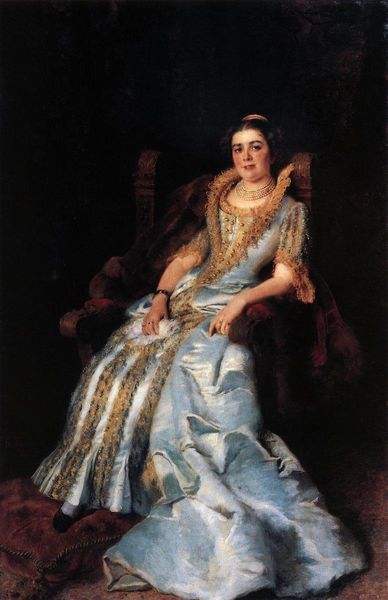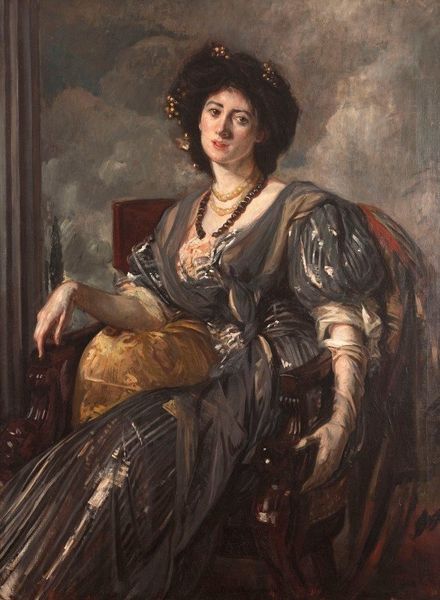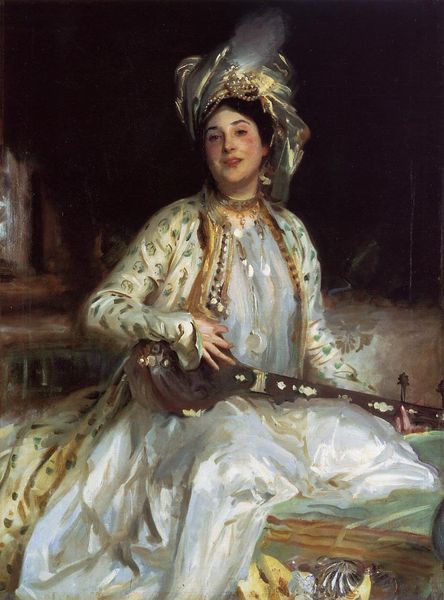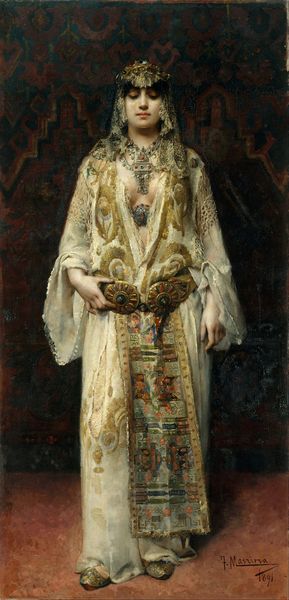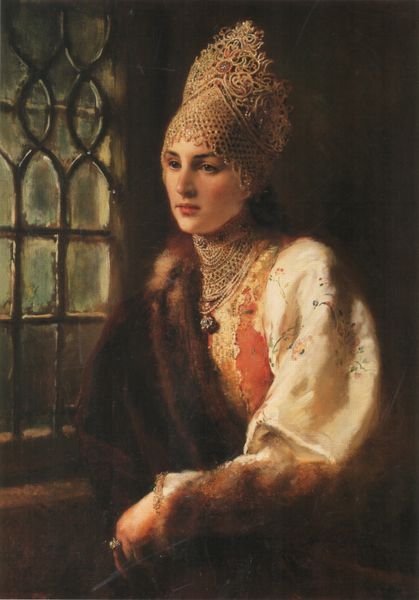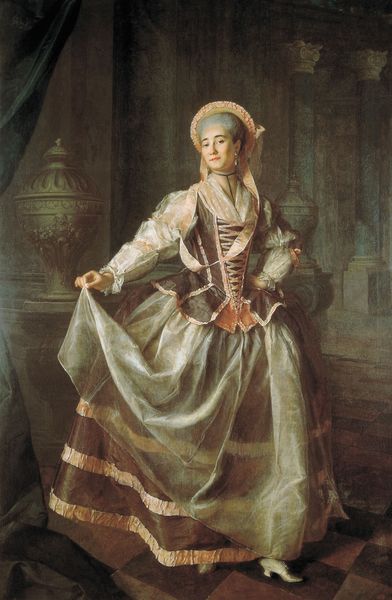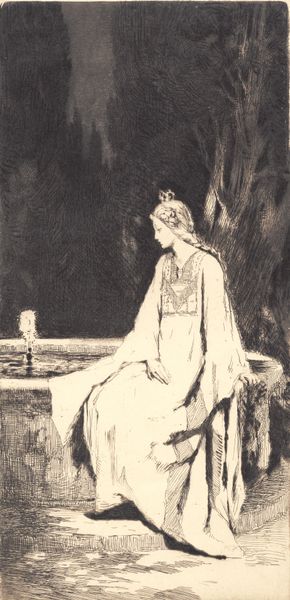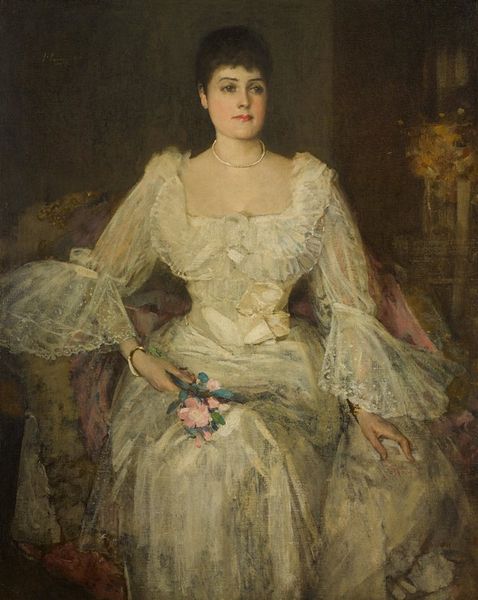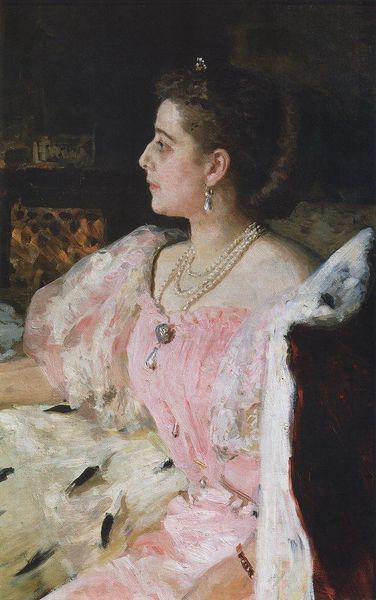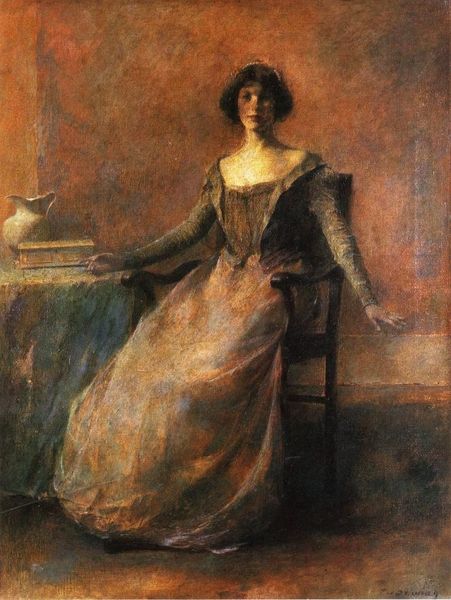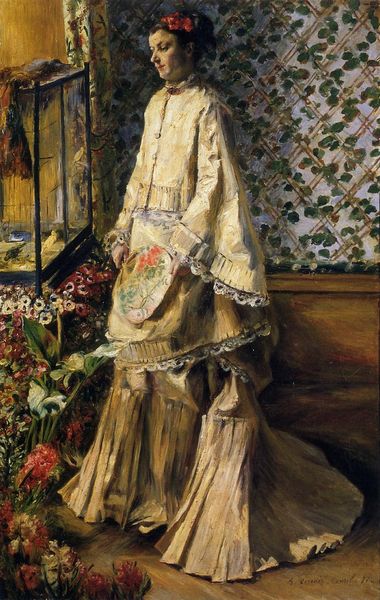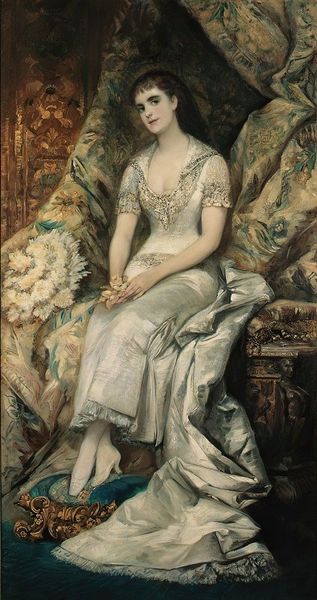
Dimensions: 117 x 174 cm
Copyright: Public domain
Editor: Here we have Konstantin Makovsky’s *Boyar's Wife at the Window*, created in 1885, using oil paints. The sheer amount of detail is striking—you could get lost examining all of the intricacies of her garment. How would you unpack this painting in terms of its visual components? Curator: It is fascinating, isn’t it? Primarily, the composition relies heavily on textural contrast. Observe the juxtaposition of the soft fur stole against the rigid geometry of the window panes. How do you interpret that visual relationship? Editor: It creates an immediate tension—a contrast between confinement and opulence, maybe? Curator: Precisely. And note the palette—the artist skillfully balances warm golds and creams against cooler blues and greys to emphasize a somber tone. Further, let us analyze the application of the medium. Notice the varied brushwork? The artist uses both impasto and glazing techniques, creating areas of both depth and immediacy. Where do you notice that shift in textural handling? Editor: Around her face, it’s a lot softer compared to the bejeweled headdress. That makes her expression, her face, the real focal point, contrasting all the formal ornamentation of wealth. Curator: Good. Considering the light, the external world presses upon her, yet the emotional light seems withdrawn and self-reflective. Do you agree the balance achieves a satisfying dynamic tension? Editor: Definitely! Seeing how all the formal elements combine – light, texture, composition, balance – really makes the painting come alive, beyond just a historical genre scene. Curator: Agreed. It allows us to see not merely a historical figure, but the artistry in her rendering.
Comments
No comments
Be the first to comment and join the conversation on the ultimate creative platform.


